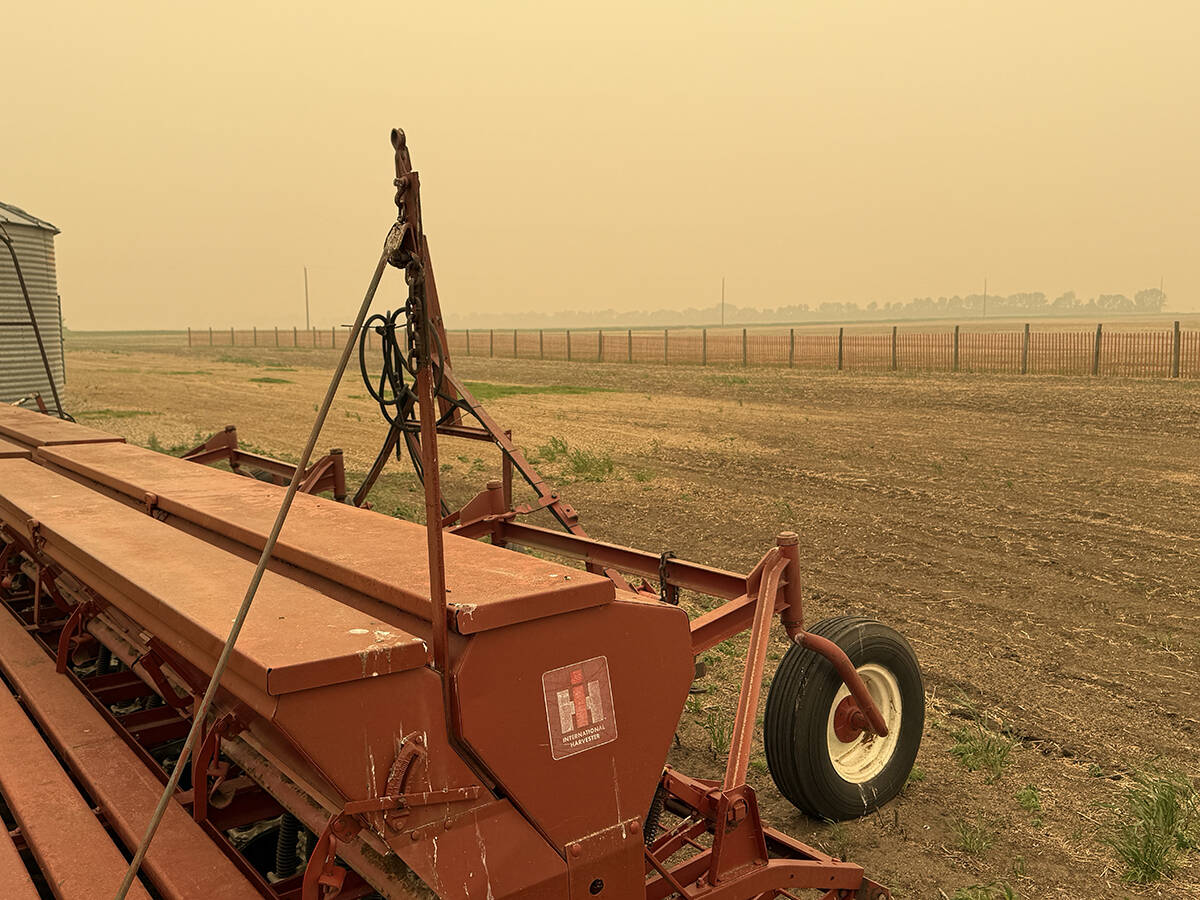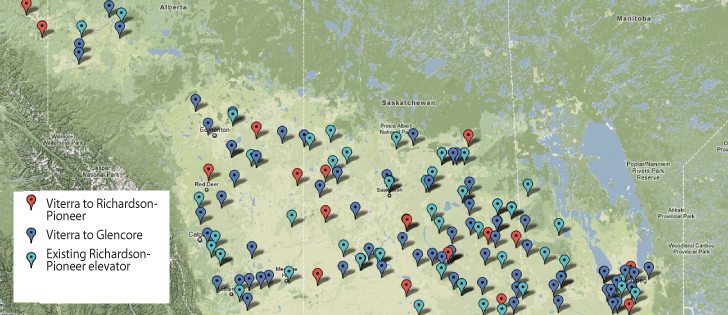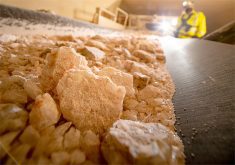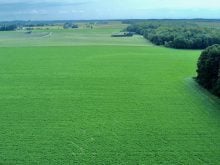More analysis needed | Competition Bureau will review Glencore, Agrium, Richardson deal
A deal to purchase and divide the assets of Viterra Inc. is in the hands of shareholders and regulators.
Farmers and industry observers are waiting to see if the $6.1 billion acquisition offer from Glencore International PLC stands.
Richard Gray, an agricultural economist at the University of Saskatchewan, said more analysis is required before the true impact of the March 20 takeover bid is known.
“I think there’s probably a need for the Competition Bureau to look at which grain facilities are being purchased and similarly, with respect to Agrium, fertilizer (facilities),” he said.
Read Also

Wildfires have unexpected upside this year
One farmer feels smoke from nearby wildfires shrouded the July skies and protected his crop from the sun’s burning rays, resulting in more seeds per pod and more pods per plant.
Glencore intends to sell 90 percent of Viterra’s retail agri-products facilities, all of its Australian retail facilities and its 34 percent stake in a Medicine Hat, Alta., nitrogen processing facility to Agrium Inc. for $1.15 billion plus working capital.
It will also sell grain handling, crop input and processing facilities to Richardson International for $900 million plus working capital. Glencore characterized this deal as 23 percent of grain handling, storage and port capacity.
Glencore will keep the remaining Viterra assets in Canada and Australia in a move designed to broaden its agricultural reach. It will maintain Regina as the head office of its North American operations.
Glencore and Agrium shareholders still have to vote on the deal, and the federal government will review it from both foreign takeover and competition perspectives.
Richard Downey, Agrium’s vice-president of investor and corporate relations, said the agri-products retail business is competitive and will remain so.
Agrium is planning to acquire 232 of Viterra’s 258 farm centres and add them to its existing network of 65. That will make Agrium the biggest retailer in Canada.
Downey expects the Competition Bureau will review the deal carefully, particularly on a regional basis.
“It’s a pretty competitive space on the retail side,” he said. “There are independents and many other retailers out there as well. It’s a matter of choices the farmer has in each and every area.”
Glencore’s lawyers haven’t re-leased a complete asset list, but Richardson has made public a list of what it will get. Its purchase includes 25 percent ownership in Cascadia Terminal at Vancouver, a terminal in Thunder Bay, Can-Oat Milling in Portage La Prairie, Man., Martensville, Sask., and Barrhead, Alta., and 21st Century Grain Processing and its oat processing plant in South Sioux City, Nebraska, and a wheat mill in Dawn, Texas.
It will also buy 19 grain elevators and the crop input centres at those elevators.
Chief executive officer Curt Vossen said there are only two places where Richardson already has a facility: Carrot River, Sask., and Vulcan, Alta.
However, both of those locations are in regions where there are several other grain handlers operating.
“I think in both cases we’re confident that it will stand the test of the Competition Bureau,” he said.
However, Gray noted that the list of 19 also includes Regina East-White City, where Richardson already has a presence.
“That’s one that Richardson is going to actually purchase so they’re not spreading out. They’re concentrating in particular regions,” he said.
“Secondly, you’ve got this issue that Agrium, being a manufacturer, now has a little larger share of the manufacturing but also has this vertical integration that would make them very difficult to compete against in the fertilizer business.”
Chris Mahoney, Glencore’s director of agricultural products, said the arrangements it has made will increase competition.
“We will keep the majority of the Canadian storage and handling assets at port facilities,” he said in an interview. “We are not present in Canada or even North America at the moment.”
Viterra now has a market share of 45 percent, but the acquisition will leave Richardson and Glencore with no more than 35 percent each, Mahoney added. Currently, Richardson’s share is 25 percent.
“It’s a much less concentrated, competitive landscape,” he said. “We’re a lot closer to the size of our respective competitors. We’re equal in size with each other and neither one of us is as big as Viterra is today. I think that’s good for farmers.”
Terry Boehm, president of the National Farmers Union, said there may be two companies in a location where there previously had been one, but that doesn’t mean competition will result.
“I would be very surprised to see any significant competition that would result in tangible savings for farmers,” he said in a statement.
Where do all the elevators go?
The Western Producer has created a Google map showing the locations of Viterra elevators across the Prairies that will go to Richardson-Pioneer and Glencore once Viterra is sold. The status of Viterra farm service centres and other assets that go to Agrium were unavailable as of press time.
















